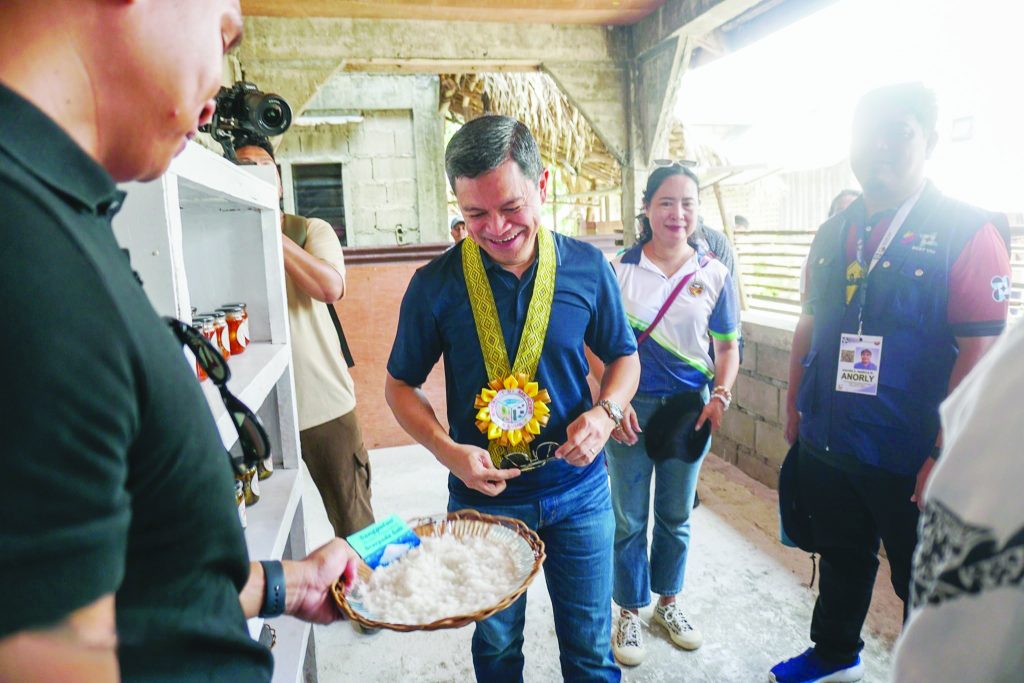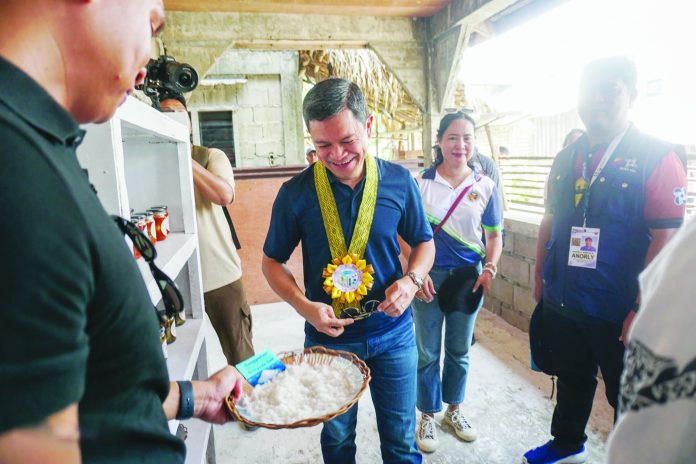
One firm bagged P6 billion projects
GOVERNMENT CENTER, PALO,Leyte– Three construction firms named by President Ferdinand Marcos Jr. among the alleged top contractors cornering a significant share of the country’s flood control projects are also handling multi-million to billion-peso contracts in Eastern Visayas, the Department of Public Works and Highways (DPWH) regional office confirmed.
Engr. Libertad Morot, assistant chief of the DPWH-8 construction division, identified the companies as Sunwest Construction and Development Corp., Alpha Omega General Construction and Development Corp., and Hi-Tone Construction and Development Corp, in a press conference on Thursday, August 14.
Of the three, Sunwest — owned by Ako Bicol Rep. Elizaldy Co — has secured the largest share in the region, with 19 projects worth a total of P6 billion. Alpha Omega has one project worth P241 million, while Hi-Tone holds two projects in Abuyog, Leyte, one of the province’s most flood-prone towns.
President Marcos earlier disclosed that in 2022 — his first year in office — 15 contractors cornered one-fifth of the P545-billion national allocation for flood control infrastructure, raising concerns over possible preferential awarding of contracts.
Morot said the projects awarded to the three firms are part of 140 flood control undertakings in Eastern Visayas since 2022, of which 68 have been completed and 72 are ongoing. She assured the public that all projects passed inspections by the DPWH regional and central offices, as well as audits by the Commission on Audit (COA).
One of Sunwest’s flagship projects in the region is the Leyte Tide Embankment Project, a P16-billion coastal defense system spanning over 12 kilometers in Tacloban City and the towns of Palo, Tanauan, and Tolosa. Construction began in 2016 to shield coastal communities from storm surges like those unleashed by Super Typhoon Yolanda (Haiyan) in 2013.
“We have experienced several typhoons since this structure was made, and we can say that it serves its purpose,” Morot said in the press conference.
Under DPWH rules, projects worth P150 million and above are supervised by the regional office, while those below are managed by the region’s 14 district engineering offices — suggesting there may be other locally awarded projects involving the same firms at the district level.
Asked whether any Eastern Visayas lawmakers are linked to contracting firms, Morot said she had no information.
The DPWH emphasized that all awarded contracts, regardless of contractor, must meet engineering, safety, and quality standards.
JOEY A. GABIETA, LIZBETH ANN A. ABELLA, ROEL T. AMAZONA



